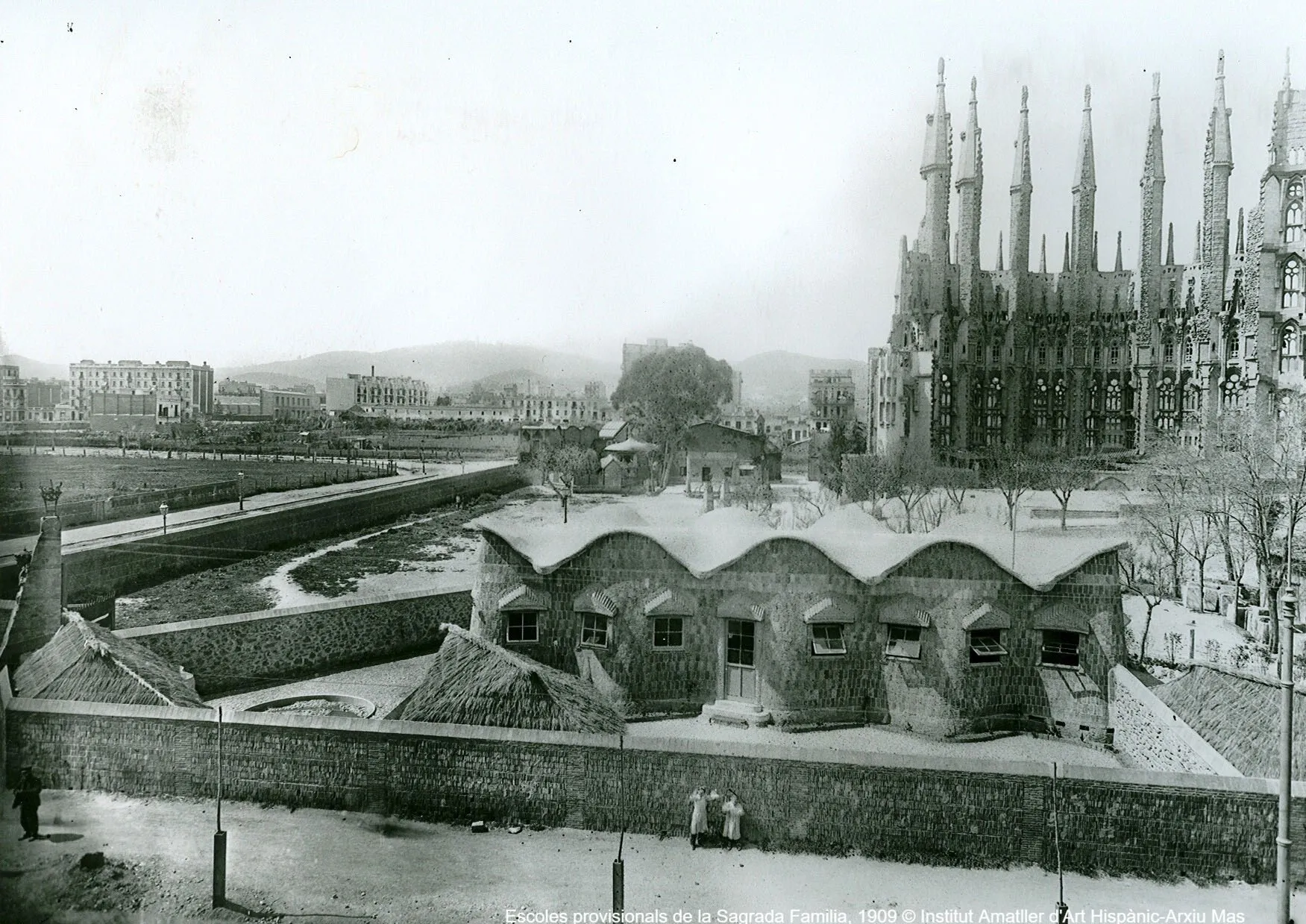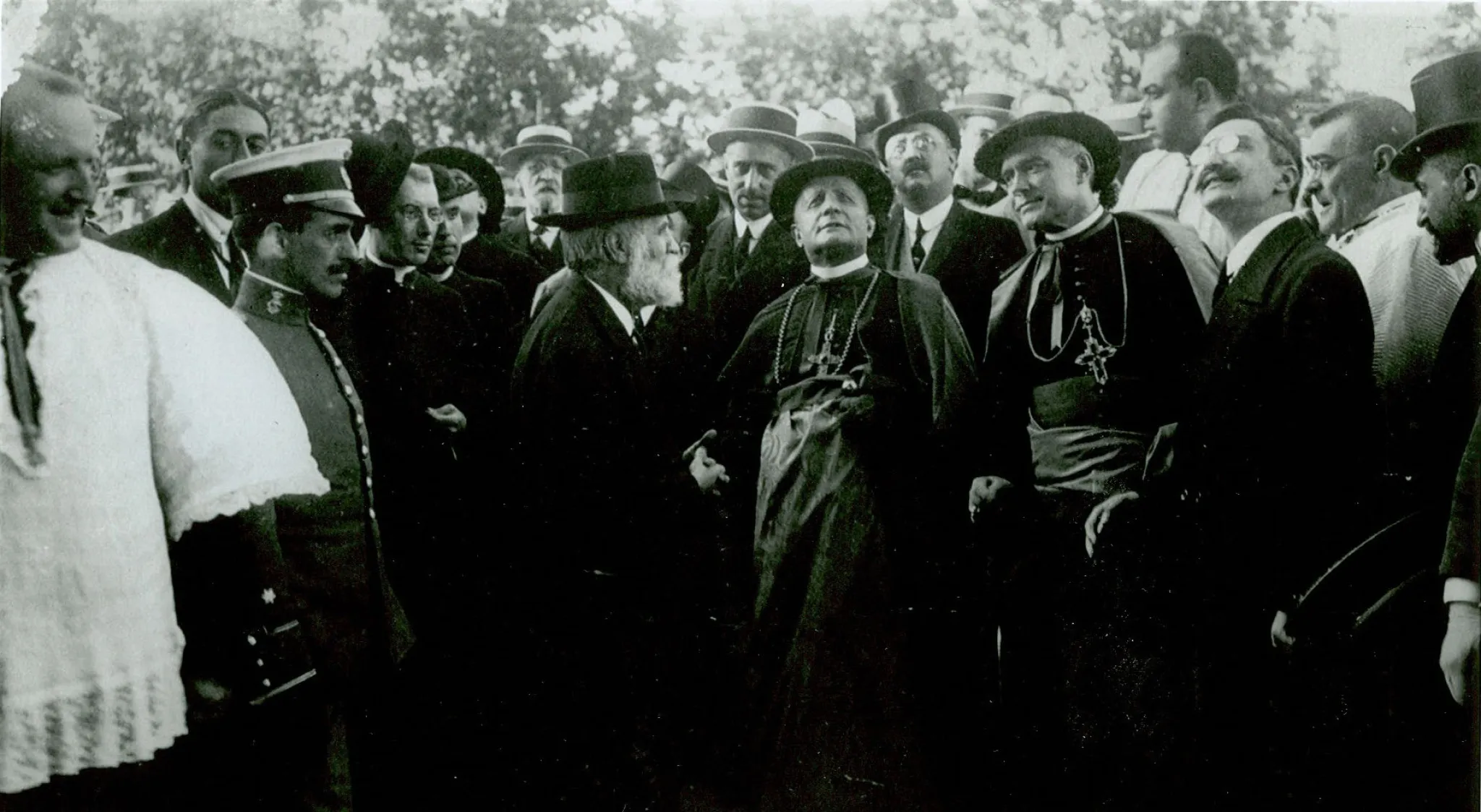
The work of Antoni Gaudí
Antoni Gaudí’s career was a process of reflection and analysis of different architectural styles, preparing himself for a new architecture, between tradition and modernity, in search of his own unique language.
Gaudí is a rationalist in his methods, organicist in his formal aspects and innovative in his solutions. Gaudí based a large part of his formal and constructive proposals on applications of descriptive geometry, while at the same time drawing inspiration from nature to extract functional and structural solutions from it. He is artistic, rebellious, technical, classic, modern, intuitive, mystic, avant-garde, a researcher, innovator and revolutionary.
The first commissions show us a Gaudí with ingenuity, creativity and mastery of materials and industrial techniques. The decorations would form the basis of a whole repertoire of symbols and allegories that he would repeat in his architectural works.
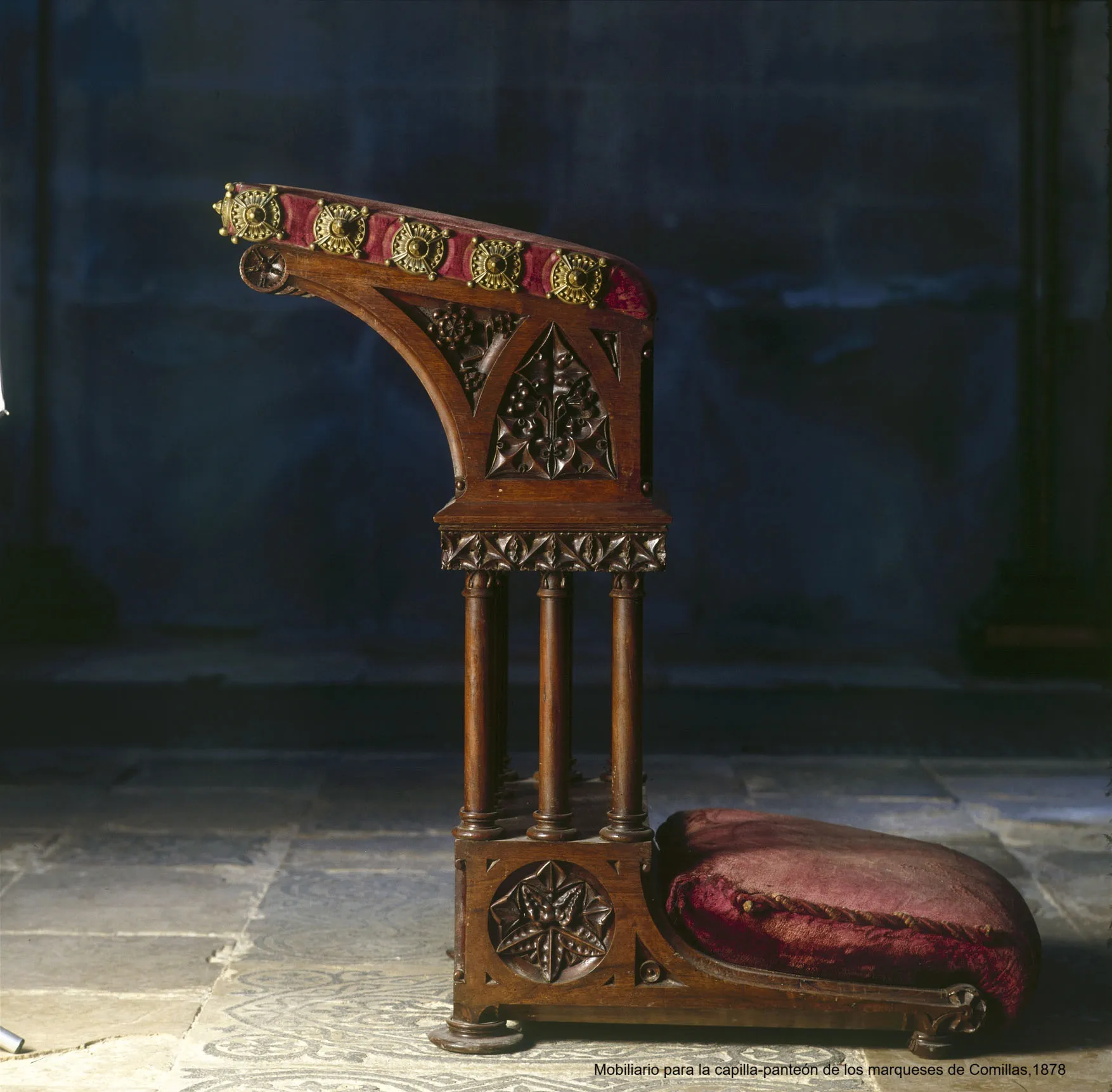
Girossi Kiosk
The kiosk included a public urinal, flower sales and advertising space. Twenty were to be built, in marble, with an iron structure and a glass roof, featuring gas lighting. A small design for urban furnishings that is surprisingly magnificent.
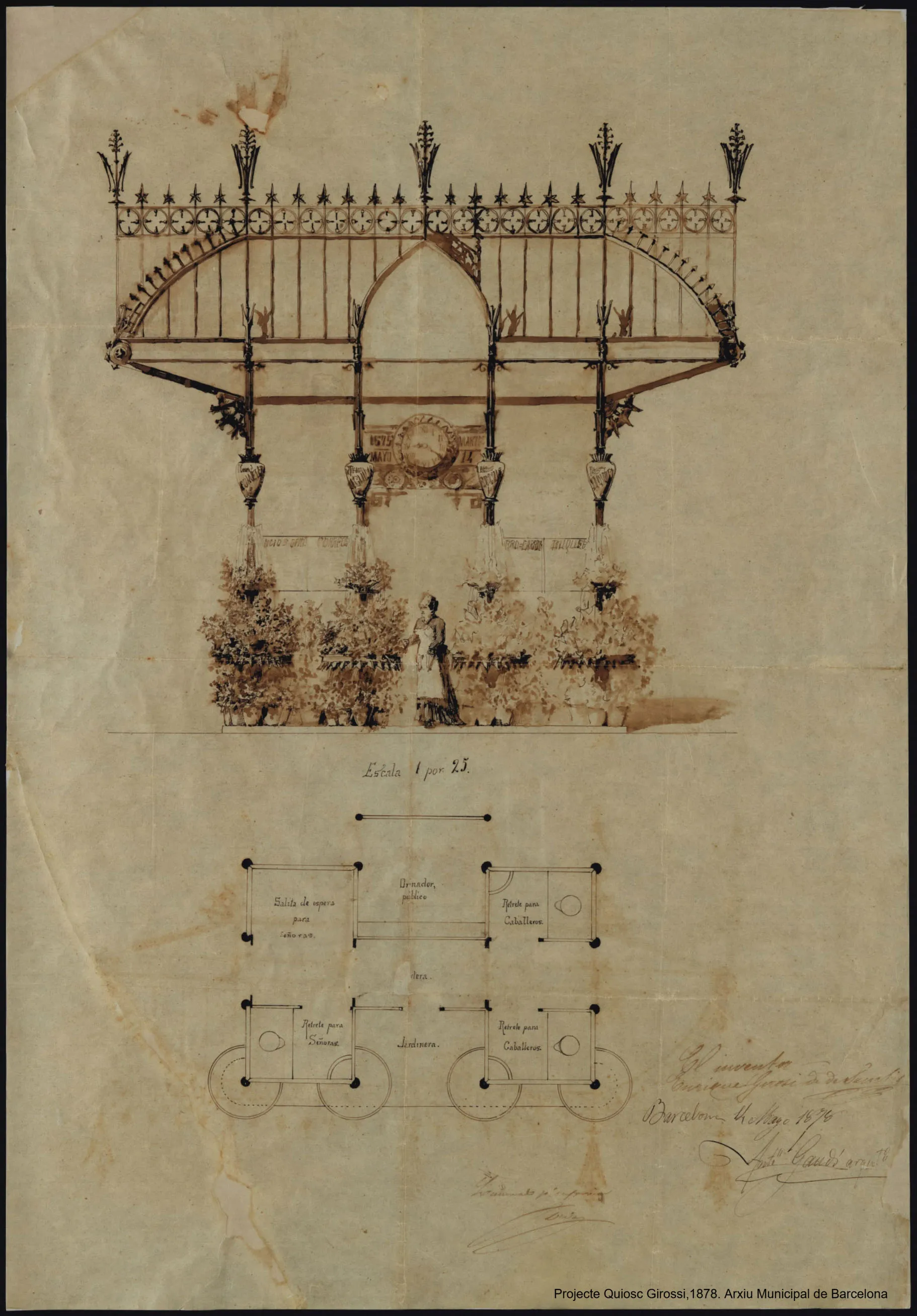
Display case for Esteve Comella’s glove shop.
The piece of furniture, made of iron, glass and wood, was exhibited at the 1878 Paris World Fair. It stood out for its refinement, bold lines and original layout. Eusebio Güell was very surprised to see it and wanted to meet the creator, and so began the relationship between the architect and his main client.
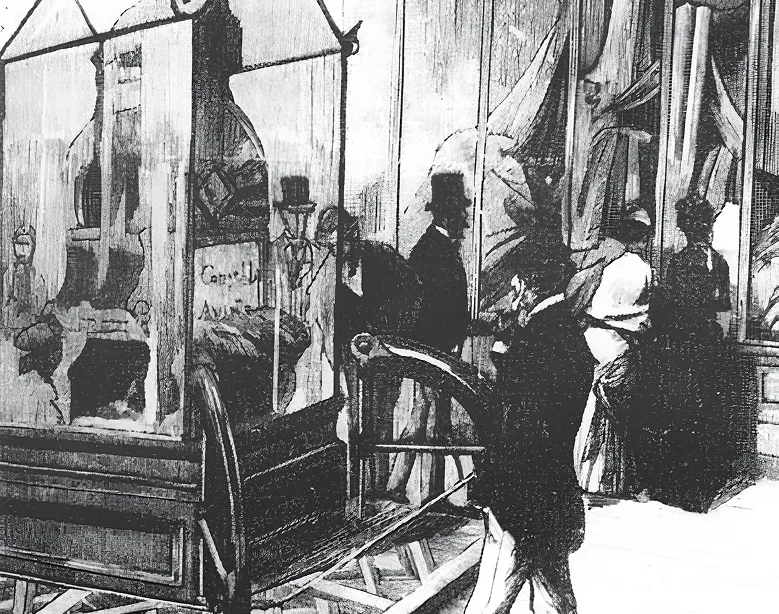
Street lamps for urban lighting in Barcelona.
Two models with three and six arms, crowned by a winged helmet, a symbol of Barcelona’s commercial power. The street lamps were gas and are still preserved in Plaça Real and Pla de Palau.
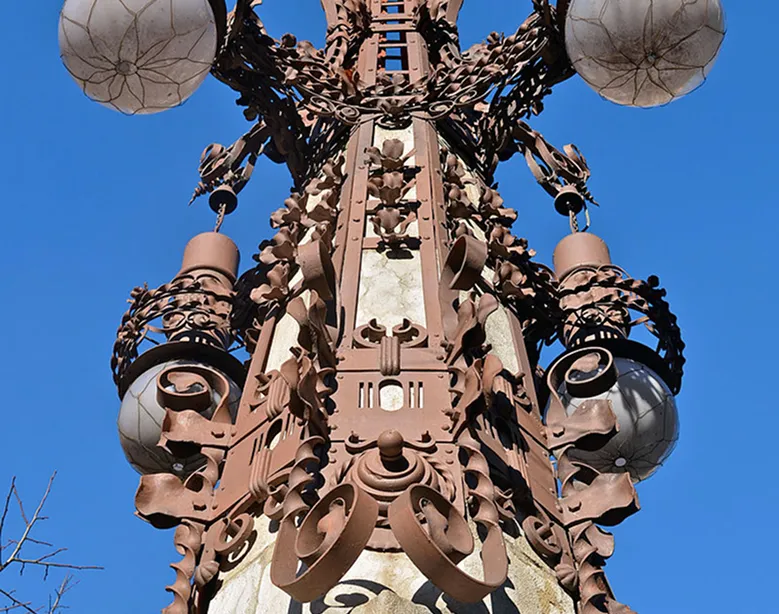
Design of liturgical furniture for the chapel-mausoleum of the Marquises of Comillas and garden kiosk.
All the furniture was made in the Barcelona workshops of Eudald Puntí. It is decorated with plant motifs and animal figures in the Gothic Baroque style. An iron, glass and wood smoking kiosk was installed in the gardens, with a fabric awning with hanging glass bells that, when moved by the air, produced harmonious melodies. With an Orientalising taste like his first buildings, it is a small piece of architecture of great aesthetic impact.

Decoration of the Gibert y Soler Pharmacy.
It consisted of a sign, two exterior display cases, a marquetry counter and an upholstered wooden bench with iron legs similar to the first pieces of furniture he designed. Lavishly decorated with allegories of pharmaceutical symbolism.
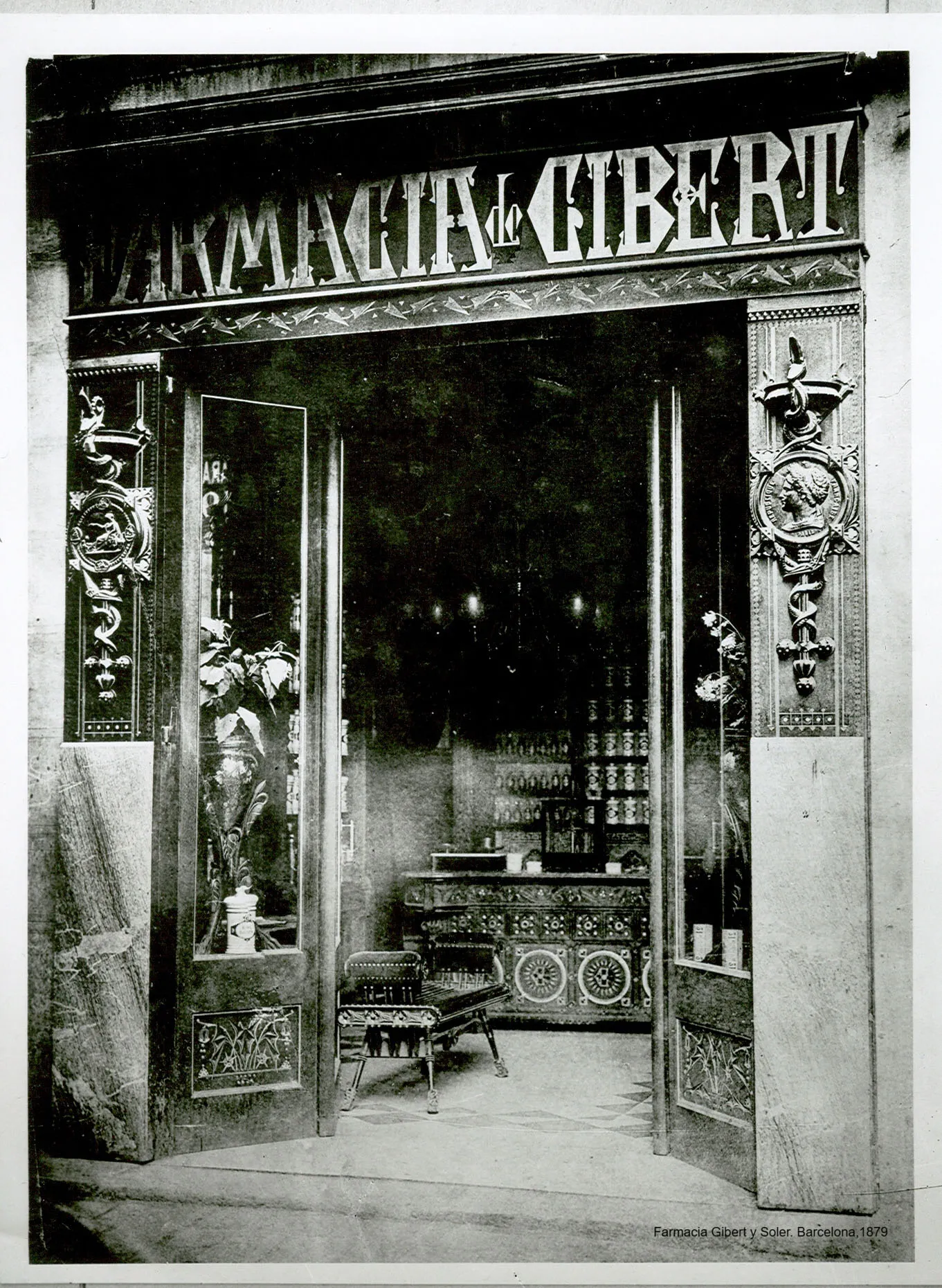
In the early works he researched and applied different structural systems, and they are examples of medieval and eastern taste, inspired by Mediterranean and Arabic styles. Gaudí experimented with the use of traditional, industrial and prefabricated materials: brick, ceramics, tiles, stone and iron. Gaudí’s mastery comes from combining tradition and modernity, going beyond classical styles. Gaudí found in nature the most important source of inspiration, which is integrated in all his works.
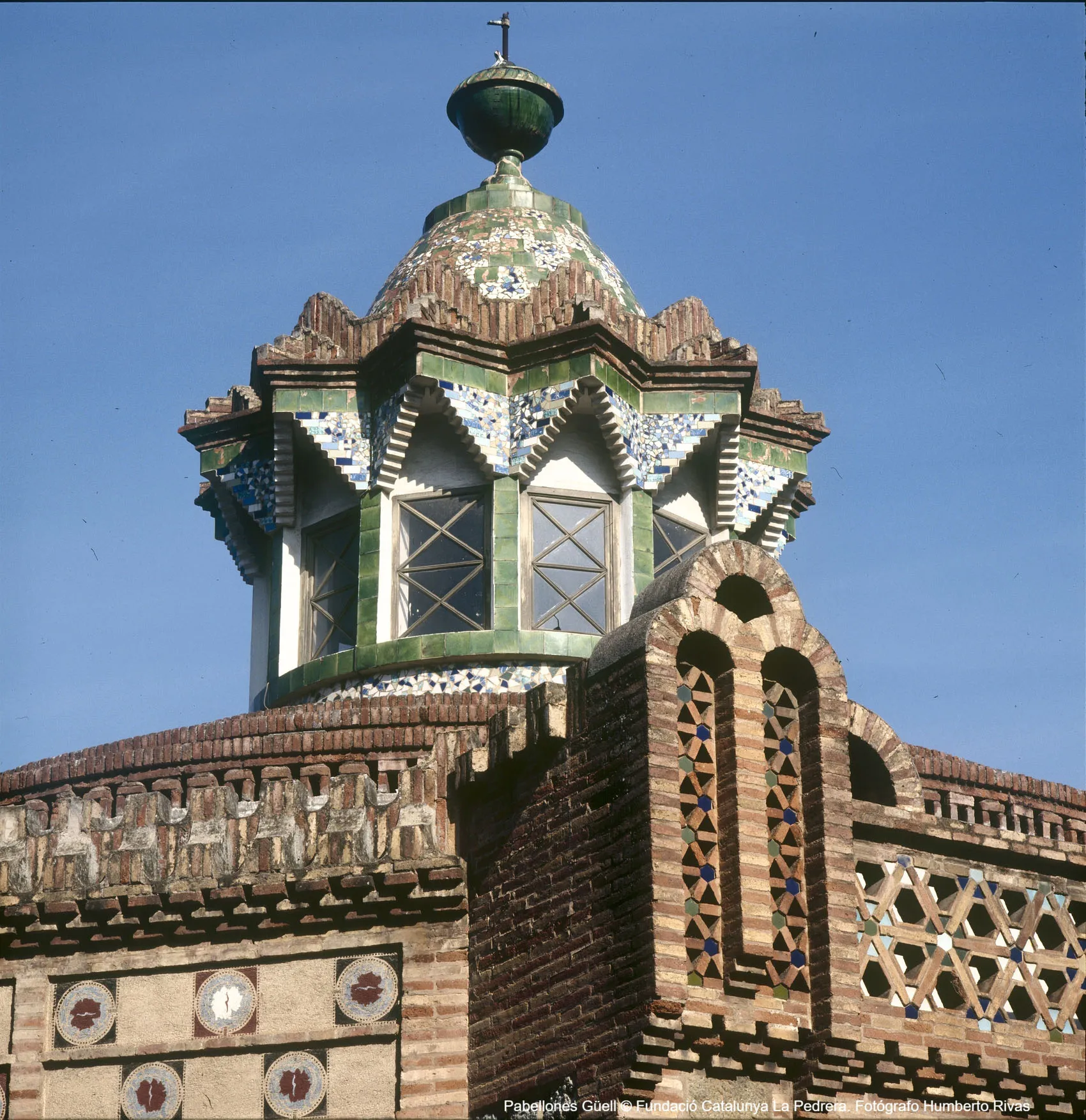
Bleaching room
He did some work for the textile factory La Obrera Mataronense. Of all the works, the Bleach room stands out. The building is of great simplicity, with thirteen slender yet sturdy parabolic arches, created by small wooden sections mounted with bolts. The use of these arches allowed Gaudí to create a large, open-plan space of almost 600 m2, without having to resort to internal divisions or structural systems such as columns or pillars.
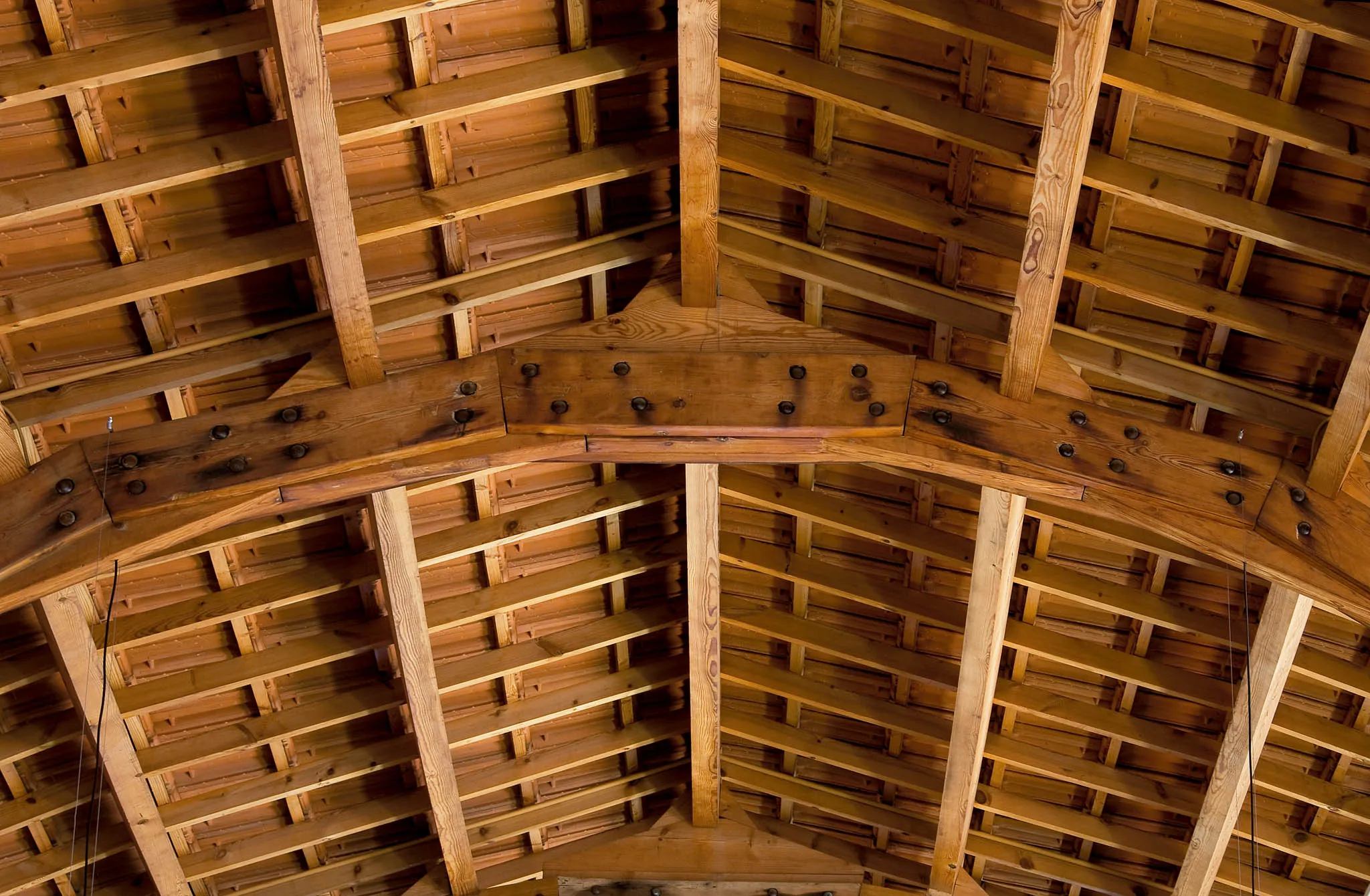
Casa Vicens
It is a summer house with a garden and the first to be built.
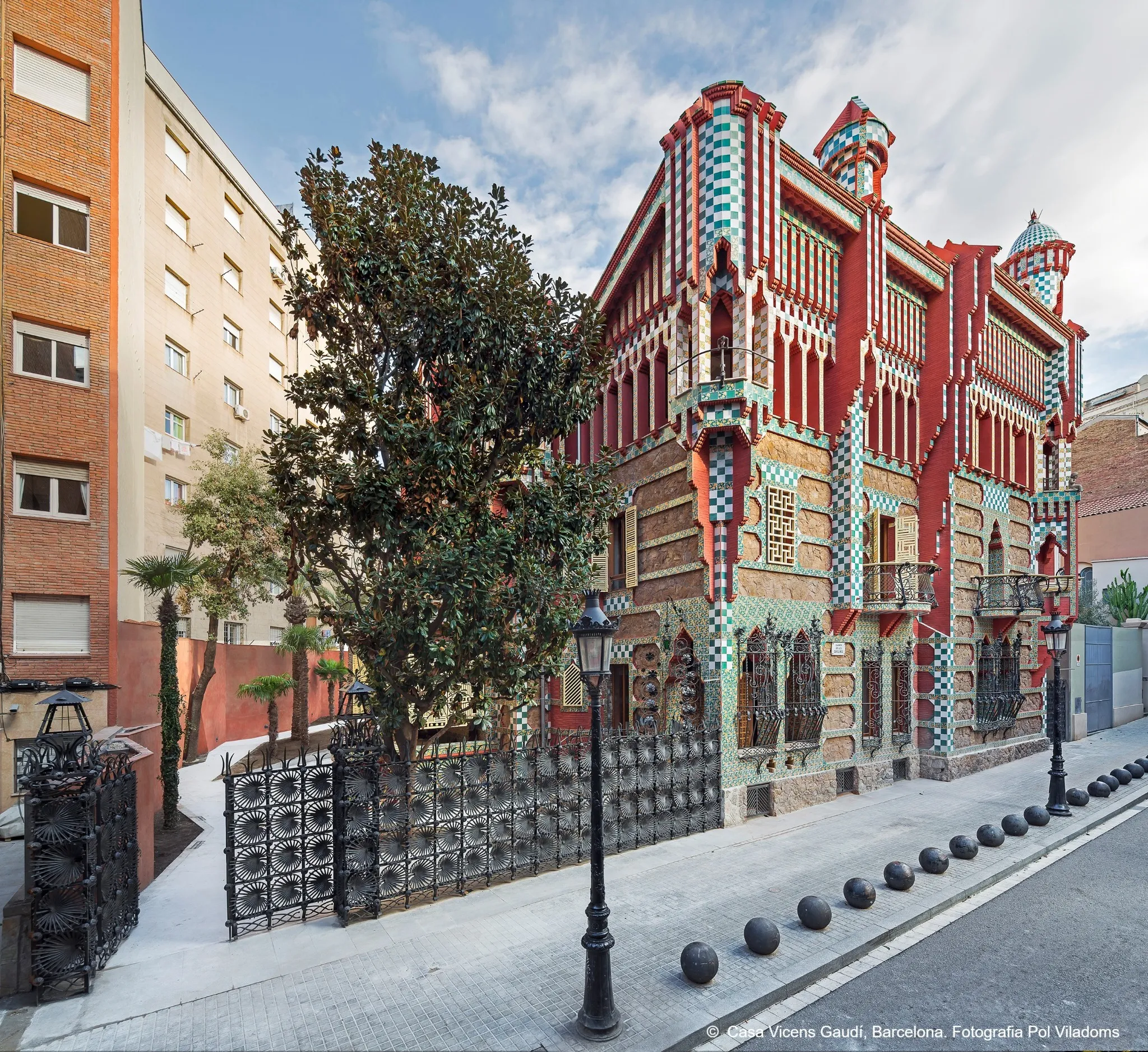
El Capricho
Summer village for the Indiano Máximo Díaz de Quijano.
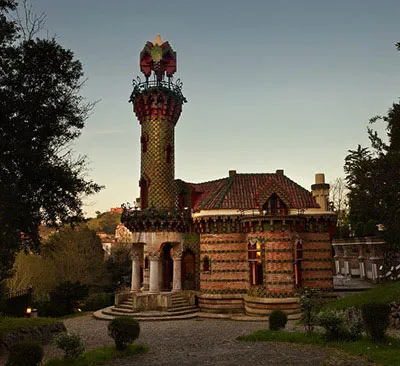
Finca Güell Pavilions
It was Gaudí’s first work for his great client and friend, Eusebio Güell. Two pavilions at the entrance to the estate for the caretaker’s house and the riding stables. Gaudí designed the structure based on parabolic arches, using brick as the basic building material with rich Arabian decorations. Of particular note is his first use of ceramic trencadís mosaic and the wrought-iron grille in the shape of a dragon on the carriage door. The serialised elements allow the door to be executed industrially.

Episcopal palace
Joan Baptista Grau, bishop of the diocese of Astorga, commissioned his friend Gaudí to build the palace. With a neo-Gothic appearance due to the structure and the sombreness of the stone walls, it consists of four storeys that receive natural light through a central space. When the bishop died, disagreements arose between the architect and the diocesan board, which considered the work to be ostentatious and not very functional, and Gaudí resigned, leaving the work unfinished.
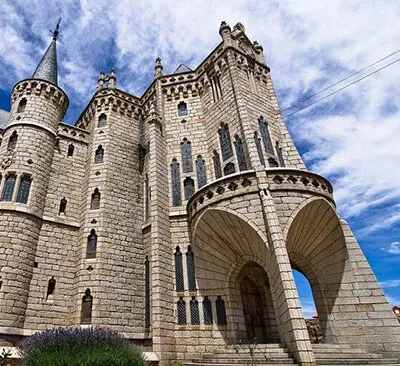
Palau Güell
In the run-up to the 1888 Barcelona International Exhibition, Eusebio Güell commissioned Gaudí to build his family residence, which was also to serve as a venue to hold receptions. Sumptuous and exquisite interiors, reminiscent of Gothic and Muslim styles, with medieval structure and decoration. Highlights include an exceptional parabolic dome that lets in natural light, the stables in the basement, and the rooftop where Gaudí breaks radically with tradition and presents the chimneys and vents as sculptural elements clad in trencadís mosaic. He later repeated this type of rooftop at Casa Batlló and La Pedrera. The furnishings for the palace range from the baroqueness of his first commissions to the mastery of execution. The chaise longue, which incorporates iron as a structural element, is totally out of the ordinary.
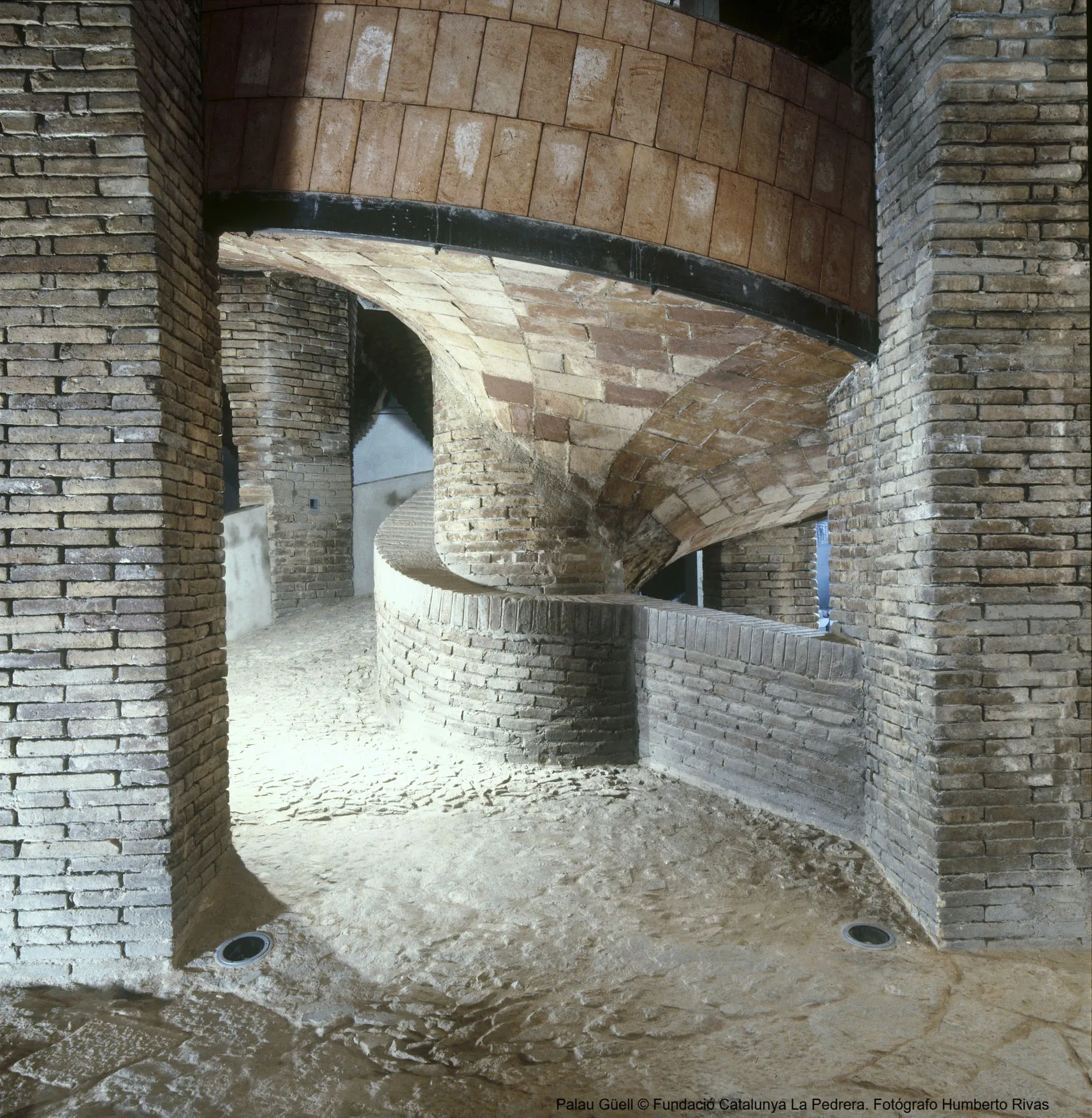
Compañía Trasatlántica Pavilion
It was built for the 1888 Barcelona Universal Exposition. This pavilion served as a display for Compañía Trasatlántica, a shipping company owned by the Marquis of Comillas. Of particular note are the Moorish plant decorations inspired by the Alhambra in Granada and the wooden lattice shutters reminiscent of the Casa Vicens.
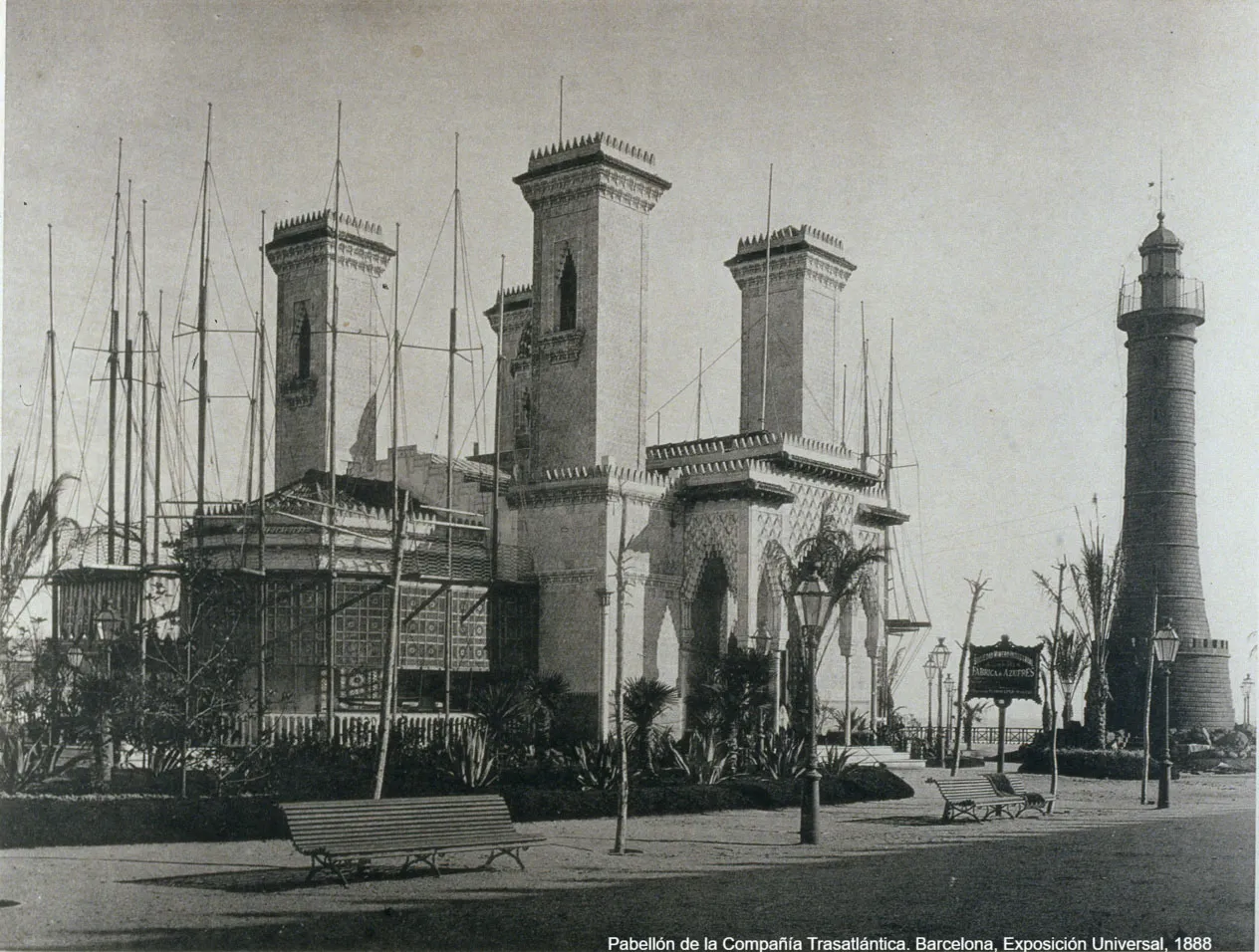
Teresianas School
He designed it as a neo-Gothic castle, with a façade combining stone wall and brick. The constructive originality lies in the use of parabolic arches in the centre and the various circulation spaces. The rich decoration on the exterior, made of wrought iron and ceramics featuring religious allegories, is particularly noteworthy.
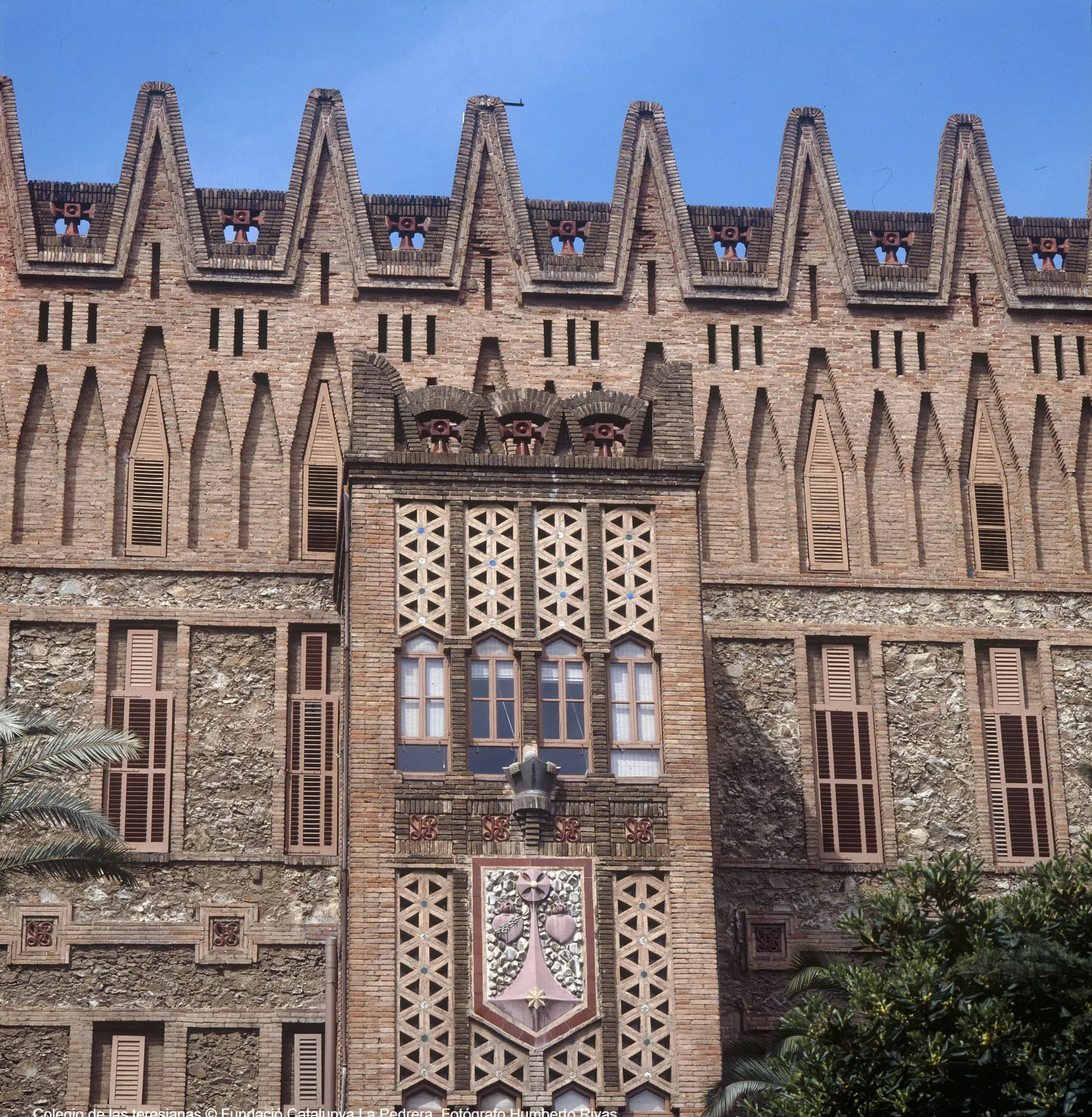
Casa Botines
Gaudí designed a building in León for rental housing and retail use. It is a trapezoidal building with an exterior appearance reminiscent of a medieval castle, although inside it is a functional building of mixed construction, with load-bearing walls in the dwellings and iron pillars in the retail areas.
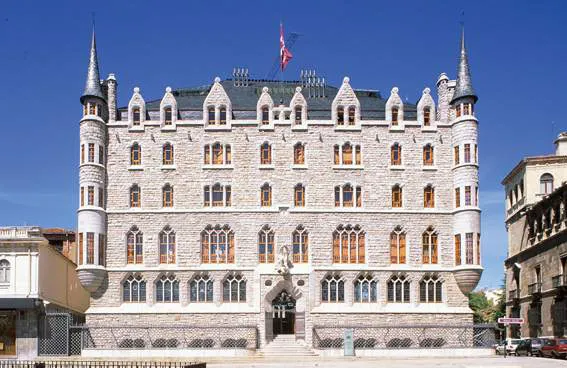
As Gaudí’s commissions grew, his architecture became more expressionist and closer to the new Modernisme models, although he laid the foundations of his own formal language. Curves over straight lines, asymmetry, dynamic forms and rich symbolic decoration. Gaudí made advances in experimental techniques to find practical solutions to construction needs. Behind each form is an in-depth study of the role that each must play. Gaudí said that if you look for functionality you will find beauty and if you look directly for beauty you will only find abstract ideas.
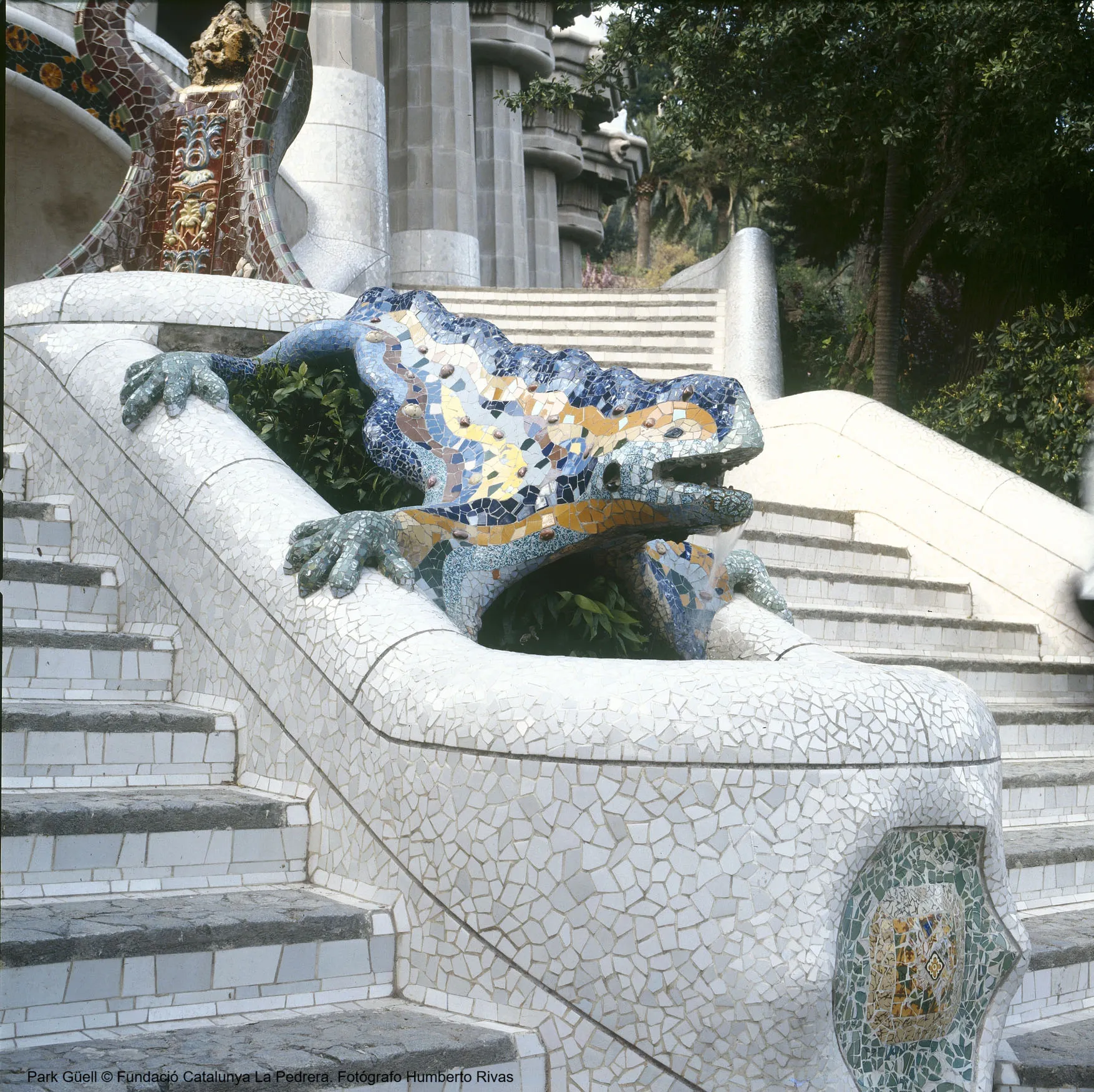
Casa Calvet
This building is home to rented flats and retail spaces. The six-storey building is a transitional work between the early Gaudí, with his Neoclassical and Baroque influences, and mature Gaudí, who worked with the curved lines and undulating surfaces of Modernisme. It was awarded the prize for the best building of 1900. For the furniture, Gaudí did away with superfluous ornamentation. All the chairs in the shared boardroom have the particularity of having a single support that connects to the back seat. It consists of five angled parts that reach a comfortable concavity that adapts to the anatomy of the back.
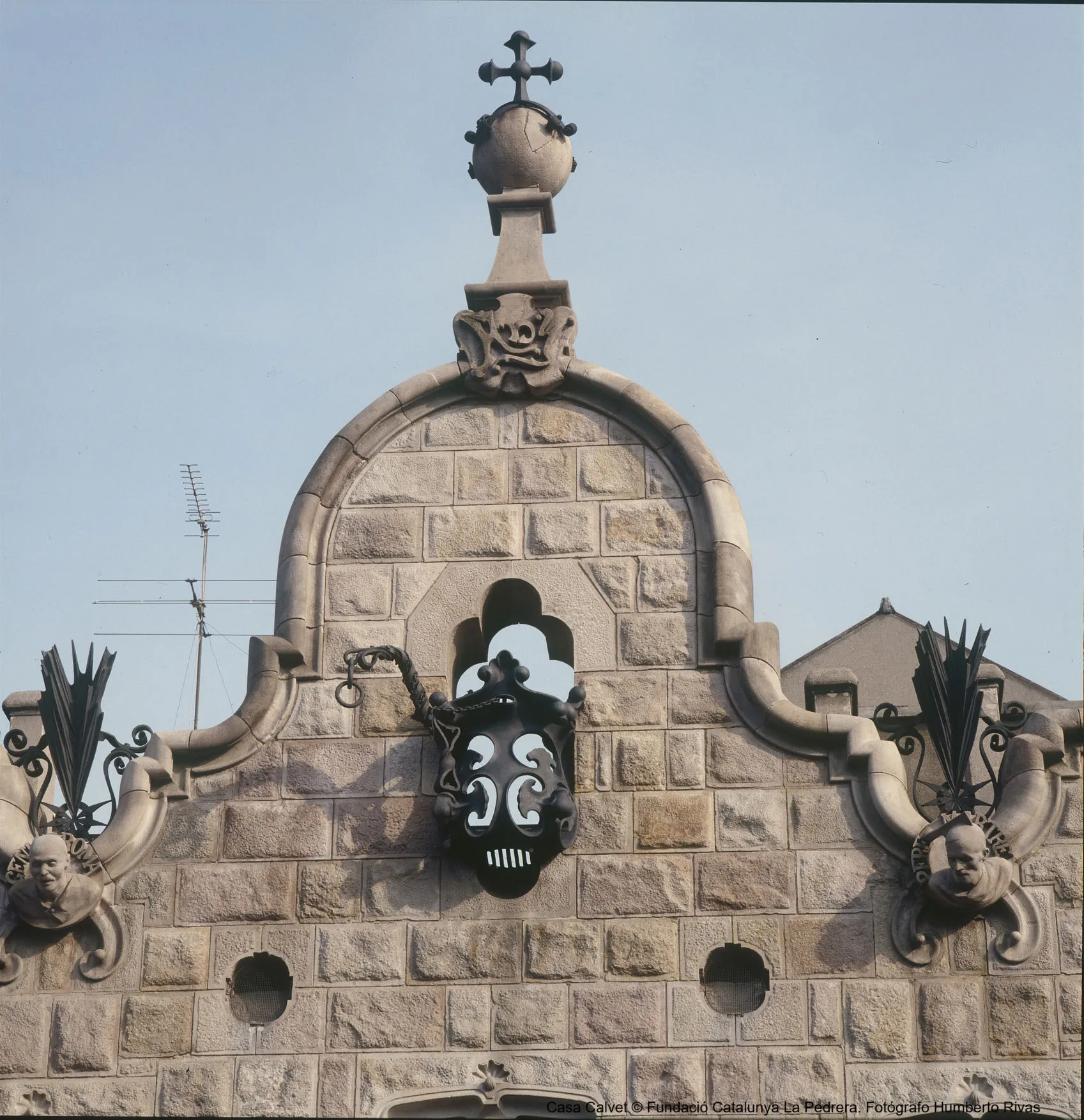
Gaudí Crypt
It is an unfinished building intended to be the church of Eusebio Güell’s textile colony in Santa Coloma de Cervelló. Gaudí researched and created an original element for designing architectural projects: a large polyfunicular model. The model was built with fabric, ropes and small weights that allowed him to deduce architectural forms directly dictated by the static behaviour of the projected building, which he would also use for the Sagrada Família. Of particular note is the use of ruled geometry, as well as the variety and provenance of many and varied materials used and reused by Gaudí in this first phase of the church. Basalt and limestone, bricks, foundry waste, ceramics, glass and wrought iron combine their textures and colours to integrate the building with its surroundings. In 1914, he designed the pews, with a trapezoidal plane and two individual seats.
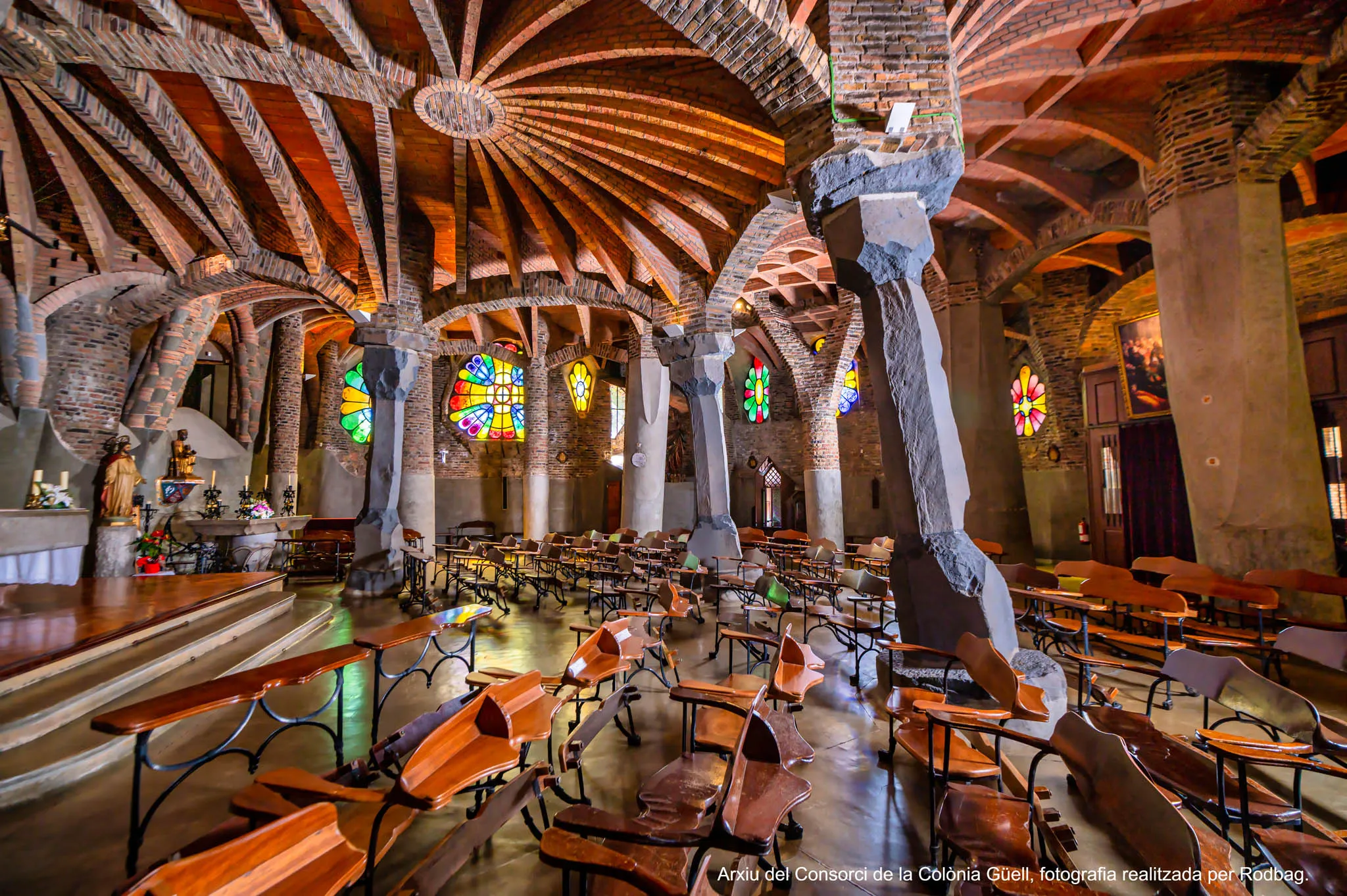
Park Güell
It is a private garden city promoted by Eusebio Güell to occupy fifteen hectares located to the north of Barcelona.

Torre de Bellesguard
Single-family detached house, with a cube-shaped volume and structured on five levels. The place has a strong medieval past as the home of the last Catalan king. The architect created a work charged with symbolism, halfway between Gothic and Modernisme, in which he narrated the biography of Martí l’Humà and the unfortunate fate of the monarch and the kingdom, when he died without descendants. The structure is clad in local slate, in keeping with Gaudí’s approach of studying and using the geology and topography of the site. Of particular note is the slender tower, located in one of the corners, and the interior construction solutions, as well as the attic and the walkway that runs along the four façades, which he also used later in Casa Batlló and La Pedrera.
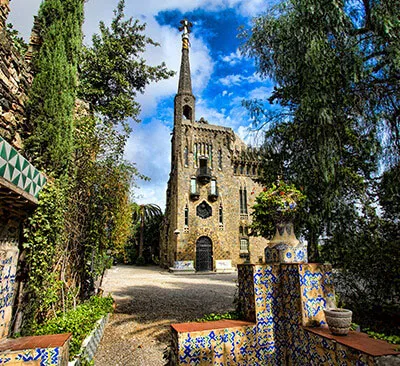
Finca Miralles
Perimeter wall and entrance to the grounds of the estate, located on the road to the pavilions of Finca Güell. Only a fragment of the 36-metre-long wall, finished with a wire-mesh grille, remains, while the large gateway, in the form of a lobed arch in reverse, covered by a canopy and a cross, has been completely preserved. The owner of the estate was his friend Hermenegild Miralles, the printer who had more than once lent the huge printing presses to the architect so that he could test the strength of the stone columns he used in some of his works.
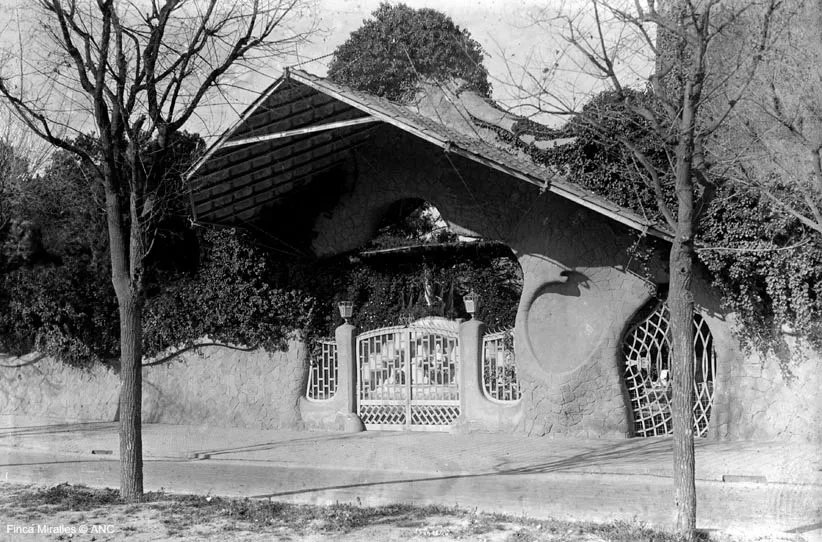
Decoration at bar Torino
Establishment that sold Martini & amp; Rossi de Torino vermouth on Passeig de Gràcia. Gaudí took part, with other artists of the time, in decorating the Arabian hall. Gaudí made the wainscoting using pressed and varnished cardboard tiles that imitated mosaics and ceramic tiles, which were manufactured by Hermenegild Miralles, and which he had also used in the smoking room at Casa Vicens. Gaudí applied modern new industrial materials in this collaboration, with an eminently Modernisme aesthetic.
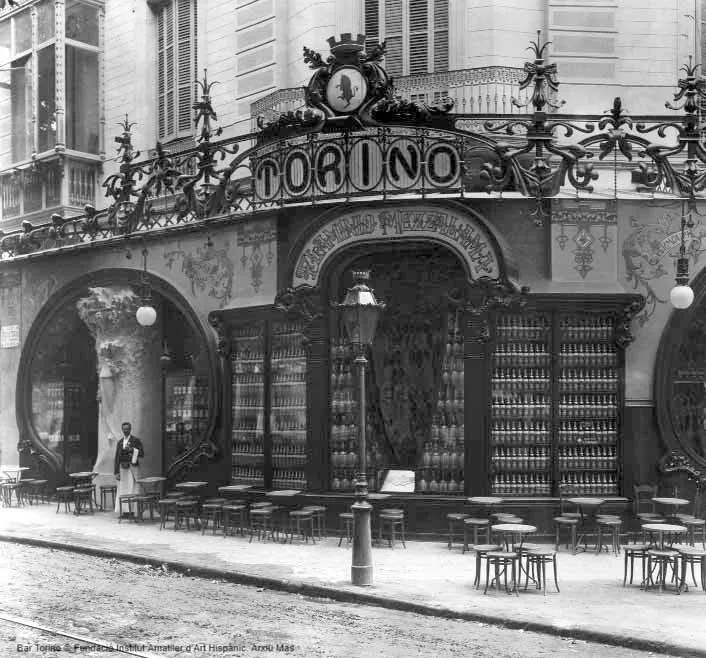
Restoration of Mallorca Cathedral
Restoration work commissioned by the Bishop of Mallorca, Pere Campins. The work consisted of moving the choir, opening the Trinity chapel, installing new pulpits, opening Gothic windows, installing stained glass windows, installing a baldachin, decorating with paintings and making furnishings.
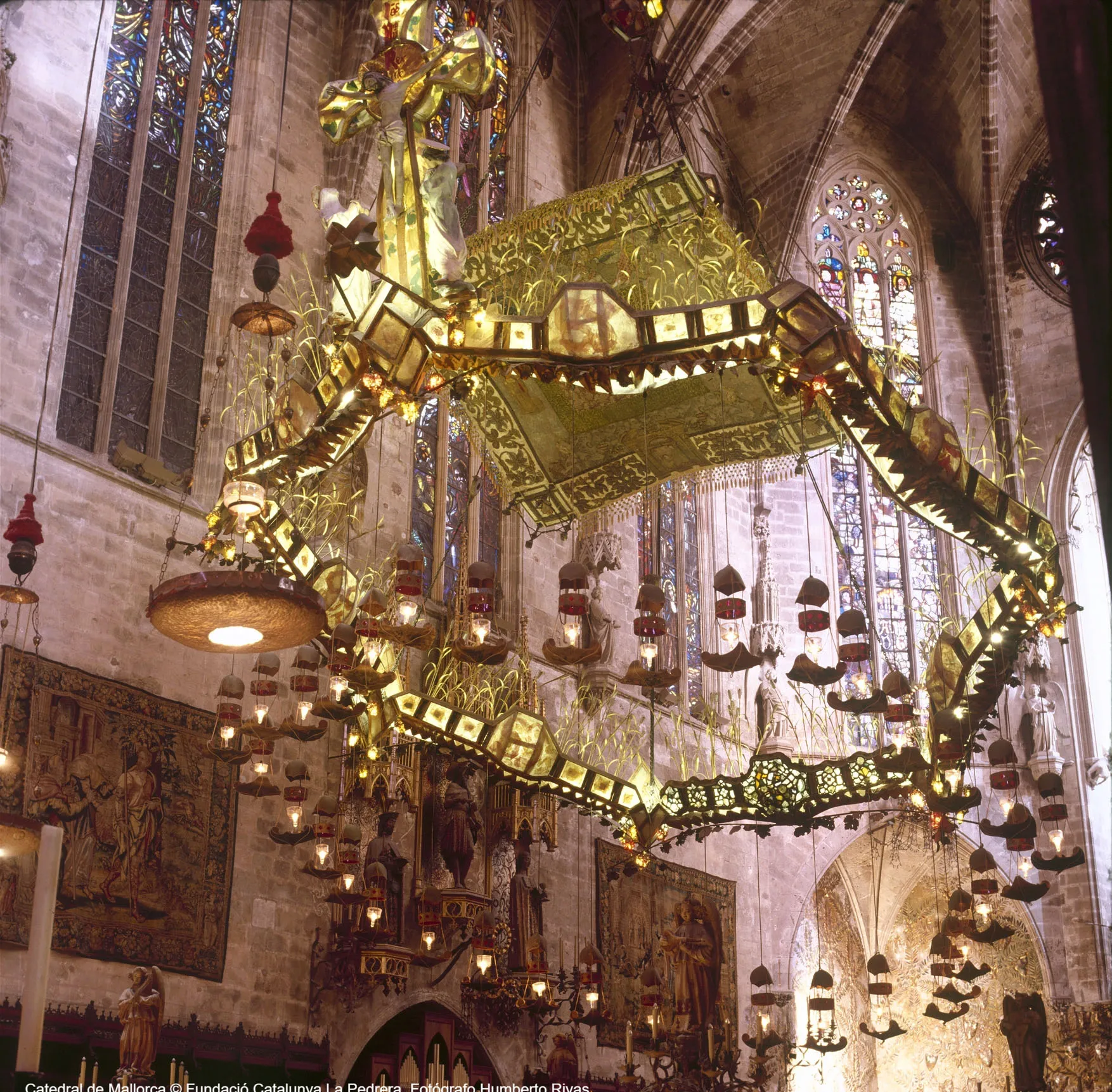
Gaudí’s mature period shows a versatile architect, interested in the novelties of his time and capable of responding to any type of commission. His shapes, formal, constructive and symbolic innovations achieve an unmistakably Gaudí style, unique and singular.
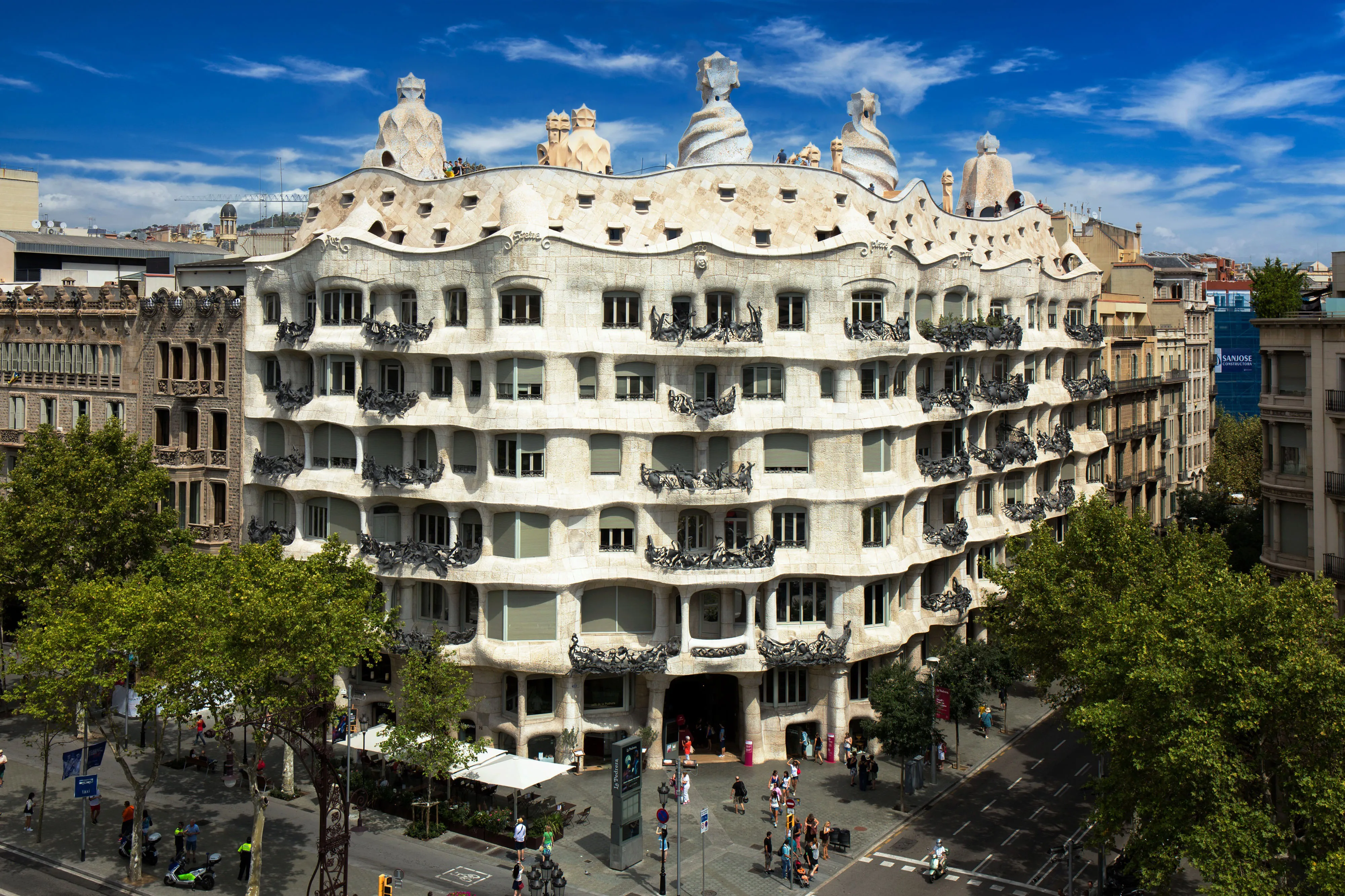
Casa Batlló
It is an extension and renovation of a residential building between party walls.
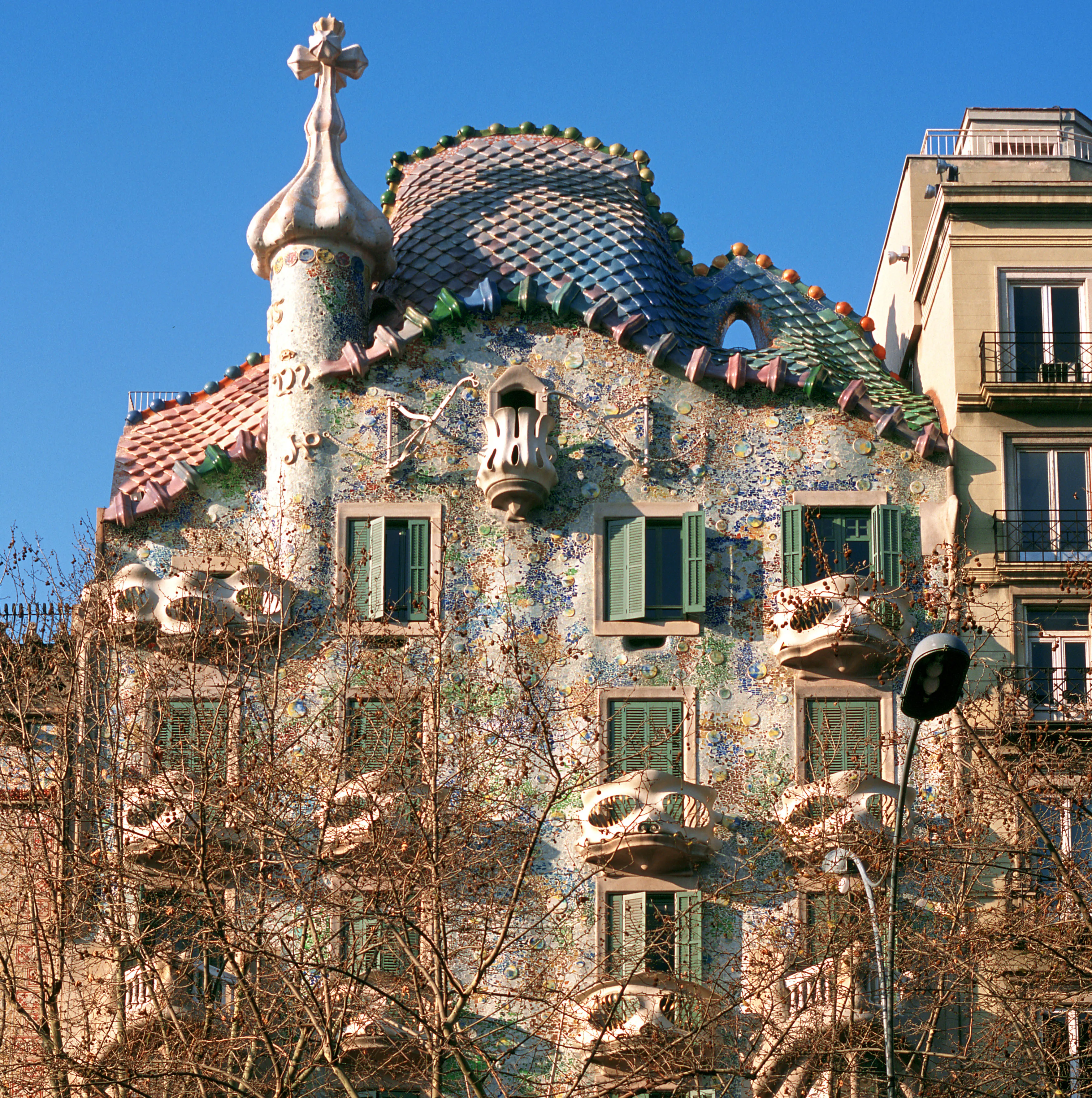
Sala Mercè
It was commissioned as a multidisciplinary performance hall (cinema, theatre, music and poetry recitals). Gaudí was ahead of his time, designing a well-equipped hall with a projection booth, regulated lighting, good acoustics, adequate ventilation and 220 comfortable seats. Under the stalls, Gaudí designed an auditorium decorated as if it were a cave.
Casa Milà, La Pedrera
A residential building with rented flats and Gaudí’s last civil work, which sums up his mature period.

Basilica of the Sagrada Família
Gaudí took over as head architect of the Basilica, starting from a neo-Gothic plan. The design of the building takes Gaudí’s geometric and structural proposals to their furthest expression.
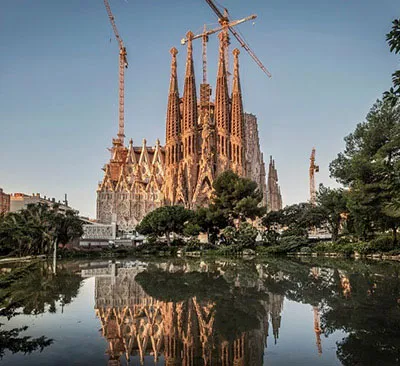
Temporary schools at the Sagrada Família
While working on the Sagrada Família, Gaudí built a school building for the children of the church workers and the neighbourhood. Located in the southwest corner of the temple, this single-storey building is of great simplicity of construction. The roof is made of brick following the geometric and structural logic of ruled surfaces. The result is maximum strength with minimum materials.
